Meeting the Future:
How Integrated Digital Strategies Prepare Media Arts Students
for Success
By Eric Freedman, PhD
Dean, School of Media Arts, Columbia College Chicago
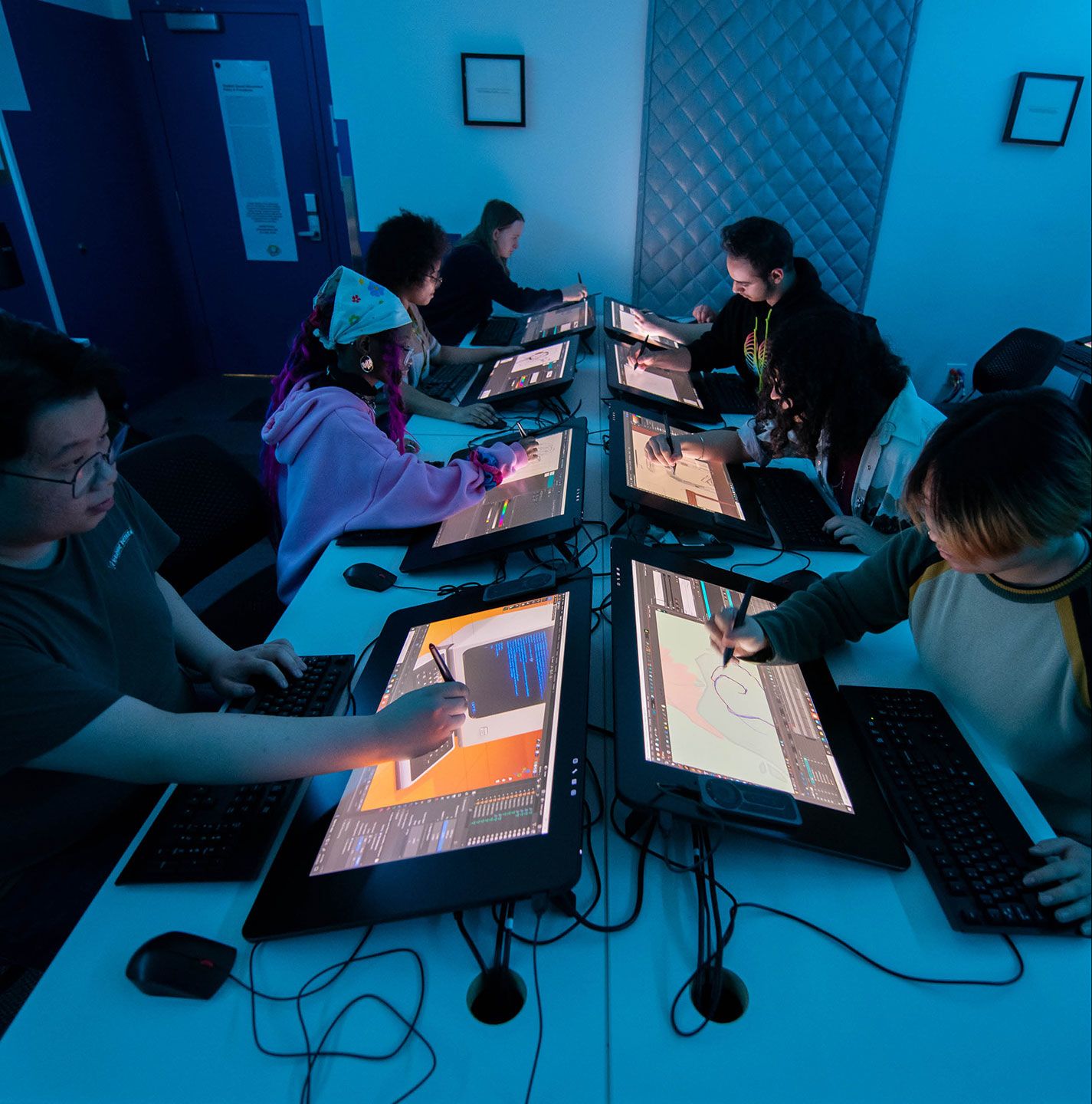
How do you train a media student to produce a concert in Fortnite? How do media schools remain agile in the face of continually changing industry needs and ensure that graduating students can compete in an ever-evolving marketplace? Here at Columbia College Chicago, an institution frequently awarded top rankings in the fields of game design, film, music, photography, and entertainment management, these questions are top of mind for the faculty and leadership of the School of Media Arts.
Media Disciplines Interconnect
As media specialists, our graduates will be asked to work as part of an integrated team and be required to understand the vocabularies and workflows of diverse creative practices around them. After all, the last five years have seen the growth of vertically integrated creative agencies serving diverse commercial clients. These agencies are one-stop shops for a range of media products, and they are well-equipped to support the needs of their clients across the preproduction to postproduction continuum. In the future, it is much more likely that our students will have professional connections with this type of multi-platform creative agency than a career solely engaging with a traditional production house.
Media disciplines that were once distinct are increasingly interconnected. Video game technologies, for example, have had a pervasive influence on non-game media. Their design and development environments and runtime components, software systems known as game engines, have promoted new uses for real-time 3D visualization that extend far beyond the field of video game development. This allowed artists as disparate as Diplo, Travis Scott, and Ariana Grande to choose Fortnite as a venue for hosting virtual concert experiences.
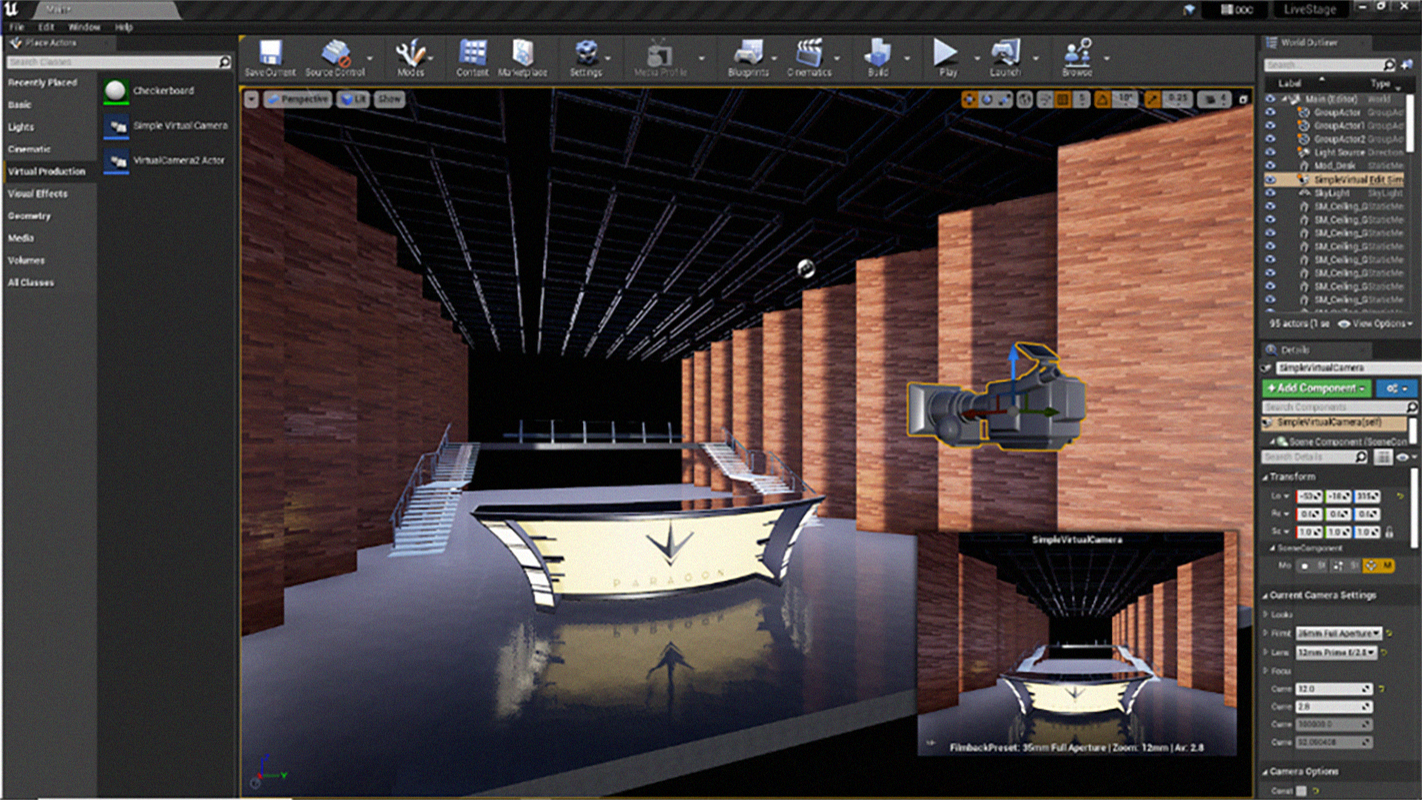
Software systems that drive video games, such as Epic’s Unreal Engine, are now used in film and television.
Software systems that drive video games, such as Epic’s Unreal Engine, are now used in film and television.
The software systems that drive video games now support – and influence – every aspect of the film and television production pipeline, including previsualization and advanced in-camera visual effects that complement what was once the purview of postproduction. Directors and cinematographers work in tandem with digital imaging technicians on popular television programs such as The Mandalorian and Westworld and leverage game technologies throughout their respective production processes to integrate physical and virtual assets seamlessly. Elaborate filming techniques map and capture virtual settings rendered in real-time across custom-built LED walls while recording live performers, creating the impression they are standing in a cosmic bar or a western street.
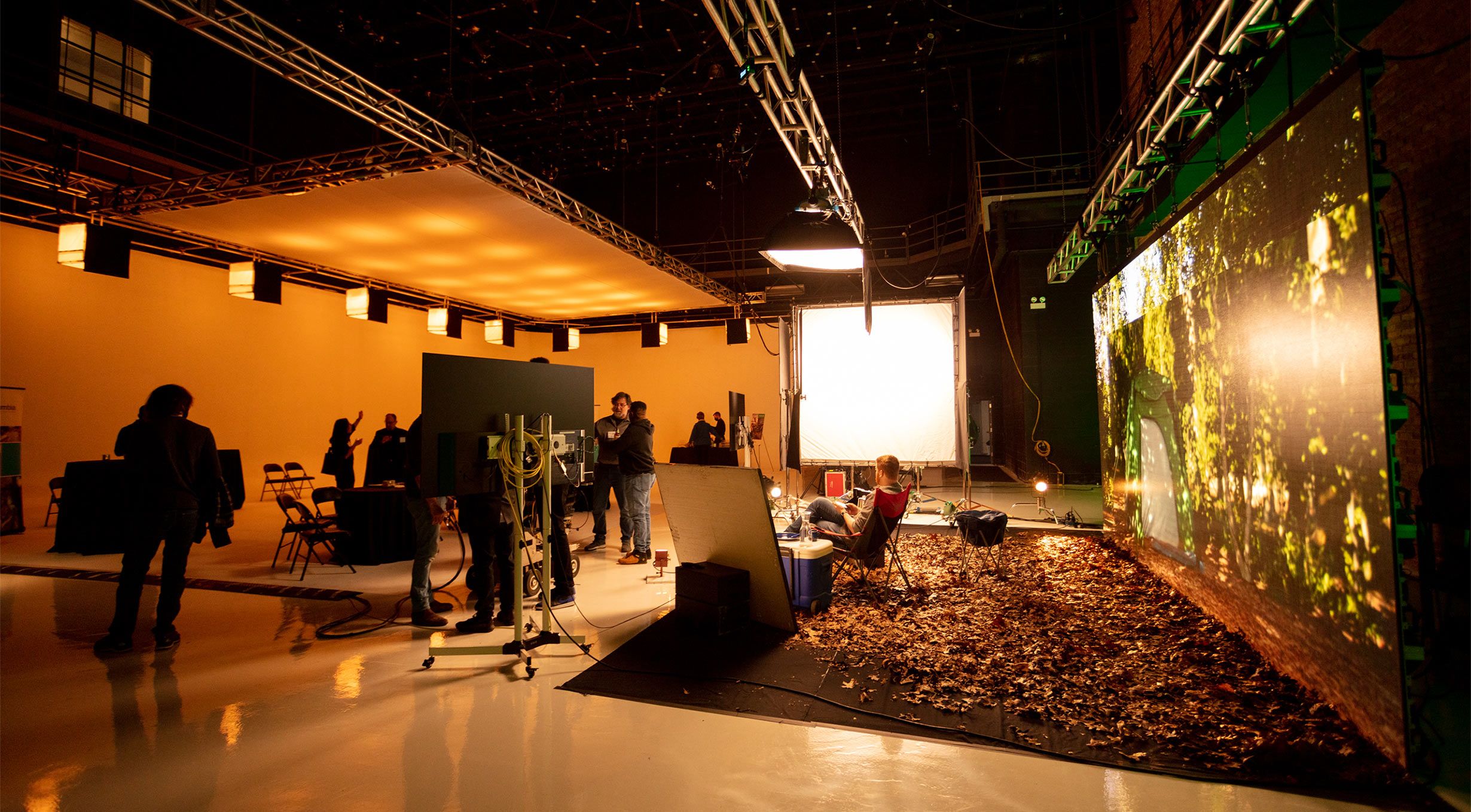
Today, elaborate filming techniques map and capture virtual settings rendered in real-time across custom-built LED walls while recording live performers. Photo taken at Revolution Studios by Anna Blank.
Today, elaborate filming techniques map and capture virtual settings rendered in real-time across custom-built LED walls while recording live performers. Photo taken at Revolution Studios by Anna Blank.
Rapid Technology Changes Complicate Academic Training
These swift advances in technology are shaping industries that have always experienced a rapid rate of change. As they transform broad swaths of visual culture, they also add a level of complication to academic media training even as higher education institutions consider how to redesign their curricula and redirect annual operating dollars to meet industry where it is. Change often has a longer arc in higher education as we prioritize our academic investments – in a time of economic challenge – to invest in faculty expertise and infrastructure to support emerging approaches to study, while simultaneously addressing the inequities that have operated across the educational continuum (from K-16). This is especially true in media praxis, where technology remains current within a very narrow window (and where the dedication of limited resources to still evolving technical standards can leave schools in the lurch when one developer folds and another takes over the marketplace). Investing – or not – in a particular game development engine or virtual reality platform can leave an institution ahead of the pack or lead to years wasted on a once-hot technology since overtaken.
So, where does this leave institutions charged with ensuring that students graduate with career prospects and skills to prepare them for success in various fields—perhaps even in jobs that don't exist yet?
Collaboration, Cross-Training, and Understanding the New Landscape
We must continue emphasizing collaboration and cross-training, positioning ourselves as part of an ever-evolving industry pipeline. We must commit to preparing students for active roles in producing a broad range of creative projects. Higher education must keep up as the lines between film and television continue to blur. The mechanics of successful distribution and exhibition are linked to streaming services. The logic of algorithms and the tools and methods of game design are shaping more traditional fields, where programmers and visual artists now share center stage, and more complexly defined mediated experiences are part of our cultural landscape. Simply put: the time has come for schools to help students and their families re-understand what the entry point to the media marketplace looks like now.
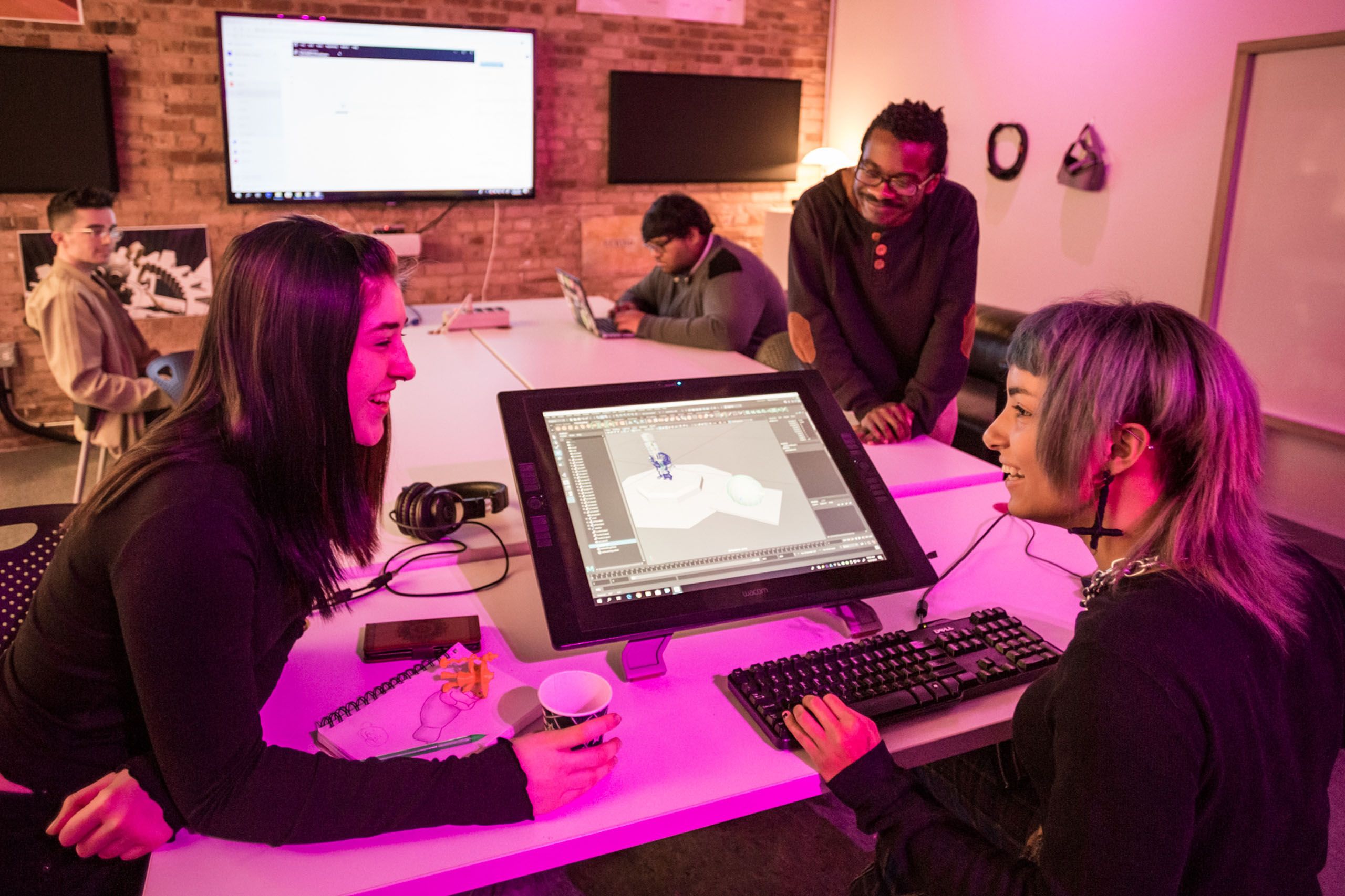
Collaboration and cross-training are essential to position media schools as part of an ever-evolving industry pipeline.
Collaboration and cross-training are essential to position media schools as part of an ever-evolving industry pipeline.
Advancing Capabilities, Realizing New Workflows to Support Forward-Thinking Vision
Here at Columbia College Chicago, this has meant expanding our commitments to digital production methods, advancing the technical capabilities of our sound stages, and realizing new workflows. It also means blending physical and virtual production and adding computational literacy to other longstanding literacies that foreground sound and vision.
By undertaking these systemic changes, our School of Media Arts is leveraging our sister programs in film, television, interactive media, audio arts, and even advertising and public relations to encourage a balanced approach of specialization and exploration. In the environment we are creating, a director, producer, or cinematographer will understand the workflows of real-time 3D visualization, and be able to work in any creative reality.
To support our forward-looking vision of media arts, we are recruiting new faculty and creating opportunities for current faculty to collaborate with entrepreneurial production houses across the greater Chicago area and in critical media creation locations across the country to keep current in emerging technology and practice.
Columbia Alums’ Careers Highlight Value of Adaptive Learning Strategies
The careers of some of our recent graduates from the School of Media Arts illustrate the importance for all media schools to adopt an educational model that celebrates adaptive learning strategies.
Take alumna Brittney Sherman '08 as an example: her current position as Senior Manager, Post-Production & Technical Services for Mattel Television is a rare opportunity to shine using producing skills she honed at Columbia. As Sherman says, "Much of what I learned at Columbia I still use in this position, as I work with producers every day and my degree in producing prepared me spectacularly for success in this role." By choosing a school that was and remains committed to virtual and physical production, Sherman was able to diversify her creative portfolio, ensuring that she was well prepared to thrive in a leadership position that requires her to oversee personnel working in a broad range of technical pipelines: film, television, animation, and interactive content.
Even for those alums whose careers take a more linear track, the importance of media schools embracing an adaptive model that leans into multi-platform training cannot be overstated. Alumnus Christian Sprenger '07, for example, has a high-profile portfolio for his work as a cinematographer that includes one Emmy win and two nominations, as well as experience on Atlanta, GLOW, Baskets, and Last Man on Earth. Sprenger's career as a DP depends on visual storytelling strategies linked to a high quotient of visual effects. He has leaned into this on more recent projects, including the HBO adaptation of the post-pandemic novel, Station Eleven. For an institution to prepare students for this level of success, it must evolve and adapt to a broad range of emergent media strategies while still cultivating their critical and analytical skills. Students must be trained to make the right choices, articulate their voice and point of view, and cultivate a client's vision without being driven by a simple fascination with technology.
Providing Positive Career Outcomes and Diversifying the Industry
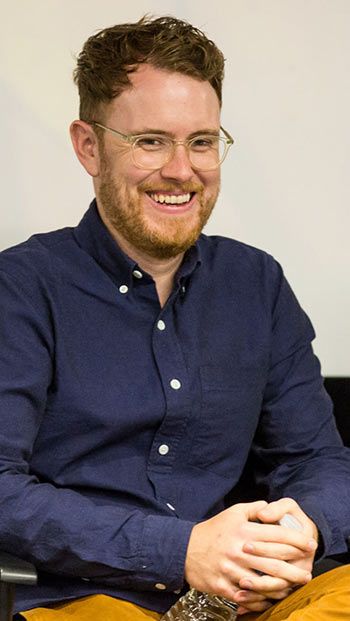
Emmy-winning cinematographer and Columbia alum Christian Sprenger '07 has a role that depends on visual storytelling strategies linked to a high quotient of visual effects.
Emmy-winning cinematographer and Columbia alum Christian Sprenger '07 has a role that depends on visual storytelling strategies linked to a high quotient of visual effects.
An essential component of that growth, for our students, will come through taking advantage of opportunities, as a student, to work with Chicago and LA production houses that embrace new production technologies, platforms, and storytelling experiences for both branded and unbranded content. These deepening institutional relationships illustrate our commitment to providing positive career outcomes and diversifying the roster of creative roles students might occupy after graduation. Also critical to student success is supporting the educational pipeline through our relationships with area high schools and two-year colleges, preparing our students to enter a shared digital economy from various entry points.
Just as we remain dedicated to providing students with the training, education, and experiences that prepare them for careers in emerging fields, we also remain committed to addressing some of these industries' longstanding systemic imbalances and inequities. Through our commitment to diversity, equity, and inclusion, Columbia is uniquely positioned to graduate the next generation of creative experts who will add significant diversity to the media industry and help us over the long term diversify our teaching base. The evolution of a school is itself an iterative process, a process that institutional leadership is committed to advancing. Our strength is in our unique composition as a media school. We collectively represent the full roster of our media industries, and my commitment is to move all of our programs forward and realize the synergies between them.
This sponsored content was written and provided by Columbia College Chicago. The editorial staff of Inside Higher Ed had no role in its creation.



